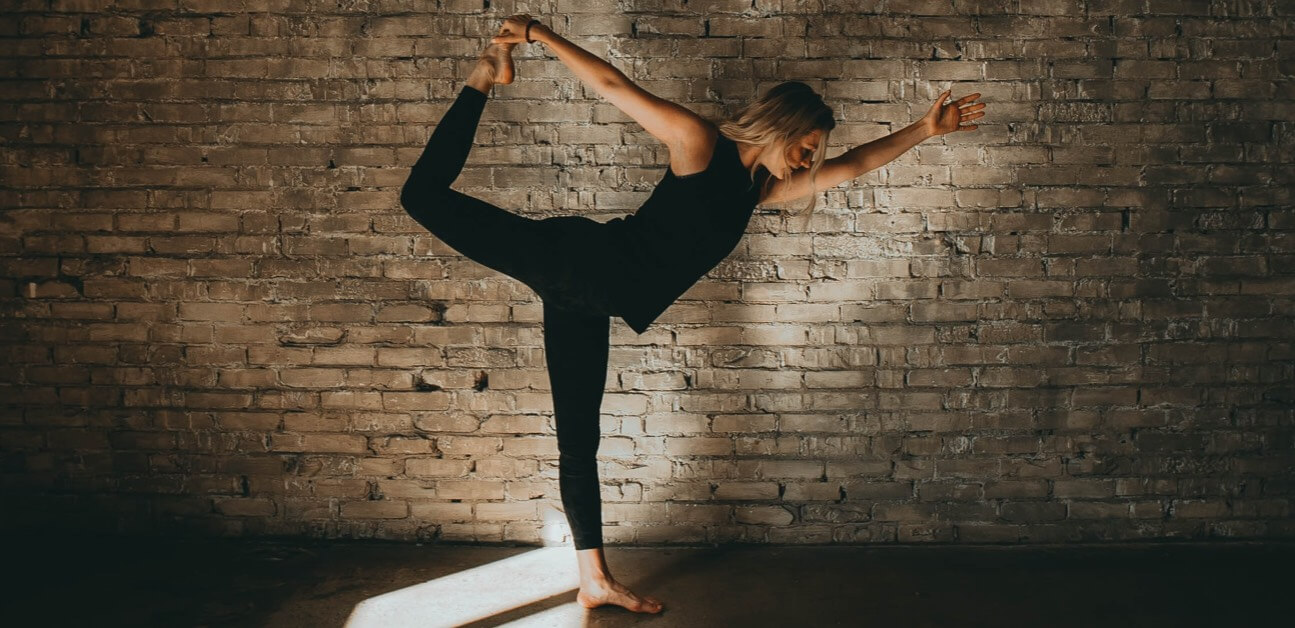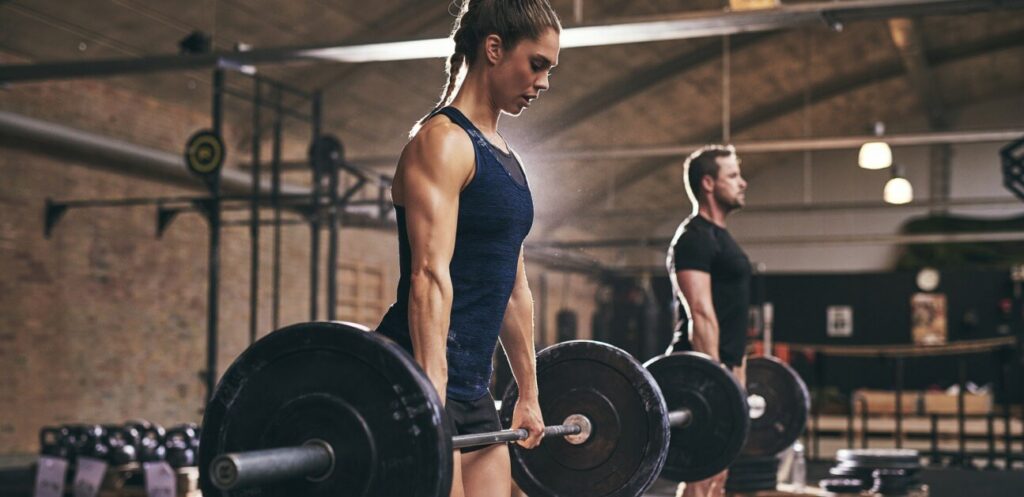Yoga for Cyclists: Five Poses to Make You Faster

Yoga for cyclists is a perfect tool for anyone that wants to round out their strengths, aid their recovery, and approach mobility or strength training from a different angle. To help you get a feel for yoga and some of the benefits it has to offer, here are five beginner-friendly poses with cycling-related benefits.
Is Yoga Good for Cyclists?
Whether it’s with strength training, stretching, or recovery-enhancing activities, every cyclist can benefit from some form of off-the-bike activity. Want to reap rewards off the bike but aren’t inclined to go to the gym? Yoga is a great alternative for cyclists. It shares a lot of the same benefits with its own unique set of strengths.
Yoga is a form of aerobic exercise that combines breathing, mindfulness, and a series of movements to develop strength and flexibility—both of which help with performance and injury prevention. With benefits to your range of motion, functional strength, balance, flexibility, focus, and breathing, yoga is rich in short-term and long-term benefits for cyclists.
Mobility
Riding a bike, usually, confines us to limited movement on a single plan of motion. This confined and uniform motion of repeatedly pushing the pedals can lead to adaptive muscle shortening, tightness in the hip flexors, quads, and calves. It can also lead to pain or soreness in the muscles surrounding your shoulders and back. With poses that stretch tight muscles and strengthen surrounding muscles, yoga for cyclists can help relieve tightness, alleviate pain and prevent future soreness. Actively practicing can also increase flexibility and improve your range of motion, preventing injuries onset by overuse and adaptively shortened muscles.
Strength
Yoga is a form of strength training that uses isometric and bodyweight exercises to challenge and improve functional strength. With many strength-based poses rooted in balance and control, practicing yoga can also improve general stability on the bike. Athletes can use yoga to improve functional strength relevant to cycling as well as all-around strength to prevent injuries.
Breathing and Focus
While many athletes start practicing yoga with strength and mobility in mind, yoga’s benefits are not limited to your muscles and your joints. Yoga uses the cadence of your breath to measure time and guide you through poses. Engaging in conscious breathing techniques like this can help you improve your circumferential breathing technique and train your respiratory muscles. Training the respiratory muscles with engaged breathing techniques can improve the efficiency of your breathing as well as train mental focus. As a bonus, some people find that focusing on the breath has a calming effect.
Recovery
The combination of these benefits is ultimately what makes yoga a great tool for recovery. Complete a small practice after your cycling workout to unwind and relax or enhance your rest days with an easy yoga routine that focuses on mobility and stretching.
How Often Should Cyclists Do Yoga?
It doesn’t take a considerable time investment to see the benefits of yoga pay off. You can progress your abilities with just two to three short sessions each week. The low impact and flexible nature of yoga also give you the freedom to add yoga into your training plan without compromising the quality of your cycling workouts.
How To Fit Yoga into Your Training Plan
Yoga can be made as strenuous or easy as you want. The amount of stress is based on the poses you chose and the duration that you hold each pose. If you’d like to try some more challenging strength-based yoga practices, then you should treat yoga sessions like strength training sessions. Add them to your Calendar on the same day as your cycling workouts and separate your cycling workouts from your yoga session by as much time as possible.
When adding yoga to enhance your recovery, you’ve got more freedom to add sessions as you go. You can add an easy routine to the end of your workouts to unwind and trigger your parasympathetic state of recovery or as a way to keep your body moving on rest days. Remember that even if you choose a relatively low-stress routine, it still takes time to build the baseline strength demanded in yoga. Start slow and take your time building.
When Should You Do It?
Should you do yoga before a bike ride? The short answer is doing it just before a ride most likely doesn’t help and could even lead to injury. Instead of stretching before a bike ride, we recommend completing some muscle activation exercises. After your ride, you can address mobility issues with the yoga poses for cyclists below.
Five Yoga Poses for Cyclists
There are countless poses that offer benefits to cyclists, and a simple search on YouTube will give you plenty of resources. You can’t go wrong with most beginner-level yoga classes guided by an instructor. If you want to get a feel for yoga and put together a small routine, you can use these five poses to get started.
When you’re practicing, remember to start slow, follow proper instructions, and listen to your body as you work through each pose. These poses may target tight and uncomfortable areas, and pushing yourself too hard can lead to injury.
1. Cat-Cow Pose
Sitting on the bike for hours at a time can result in back stiffness and pain. Cat-cow pose gently stretches the spine to relieve tension in the shoulders and lower back, making it wonderful for those with poor riding posture. By actively engaging your core throughout the pose, this practice also acts as a core exercise.
This pose begins on all fours with your hands placed firmly on the mat, shoulder-width apart. Your knees should be directly below your hips as the tops of your feet press firmly in the mat. For cow pose, you’ll draw your shoulder blades in towards your spine while you open up the chest and lift your gaze forward. For cat pose, you’ll do the exact opposite by pushing into the ground to push your shoulders away from one another as you drop your gaze back towards your toes and create roundness in your shoulders. When you feel familiar with both poses you can begin to use the inhale and exhale of your breath to move between each pose.
2. Downward Dog
If you’ve done yoga before, you’re probably familiar with downward dog. Downward dog is a great pose for cyclists. Not only does it strengthen the upper back and shoulders but also stretches out your hamstrings and calves. This pose is frequently used as a resting position, so it’s a great pose to learn if you want to combine your poses.
For downward dog, begin on all fours (just like cat-cow) with your hands, knees, and tops of the feet grounded firmly on the mat. If you haven’t already done it, this is actually a good place to warm up with a cat to cow pose. When you’re ready to move into a downward dog, curl your toes and then slowly extend your hips and knees up and back. Keep your gaze back towards your toes, and your ears lined up with your biceps as you extend through your spine.
3. Pigeon Pose
Cycling and tight hip flexors tend to go hand in hand. For cyclists managing tight hip flexors, the pigeon pose opens up your hips and stretches the hip flexors. You may also feel this stretch in your glutes, and with your core actively engaged, this is another great opportunity to strengthen your trunk.
You’ll begin this pose in a downward dog. In your downward dog, lift one of your legs (let’s start with the left) towards the sky. Take a moment to pause with your leg raised, and then as controlled as possible, bring your left knee towards your left wrist and place it on the mat. Untuck your right toes and slide your right leg back to extend and solidify your foundation. From here, you can lean into the stretch by walking your hands forward. Repeat the same process with your other leg.
4. Chaturanga
A strong core and back are essential for cyclists because those muscles groups help stability on the bike. Chaturanga is an exercise that can easily be integrated into your routine to target core strength, back strength, and upper body strength.
To complete chaturanga, begin in a plank position with your hands placed firmly on the mat, shoulder-width apart, and the balls of your feet stacked directly below your toes. Engage your core and slowly move down towards the mat like a very slow pushup. You can drop down to rest on the mat when you’re finished or move into our next pose, which is an upward facing dog.
5. Upward Facing Dog
Upward facing dog strengthens the core, the back, the shoulders, and the arms while also providing a nice stretch in the back. Strengthening these stabilizing muscles is great for bike handling and general resilience on the bike, while the back stretch can also relieve back pain onset by cycling.
To complete upward facing dog, make your way to a plank. From there, you can untuck your toes and firmly establish the tops of your feet onto the mat. Here you’re going to do chaturanga as you slowly lower yourself toward the ground—this time with the tops of your feet in contact with the mat. At the bottom of your chaturanga, press into your hands and lift and open the chest. As you hold this pose, focus on raising your hips, knees, and chest forward and maintain stability with an engaged core. Use the inhale and exhale of your breath to time your pose.
